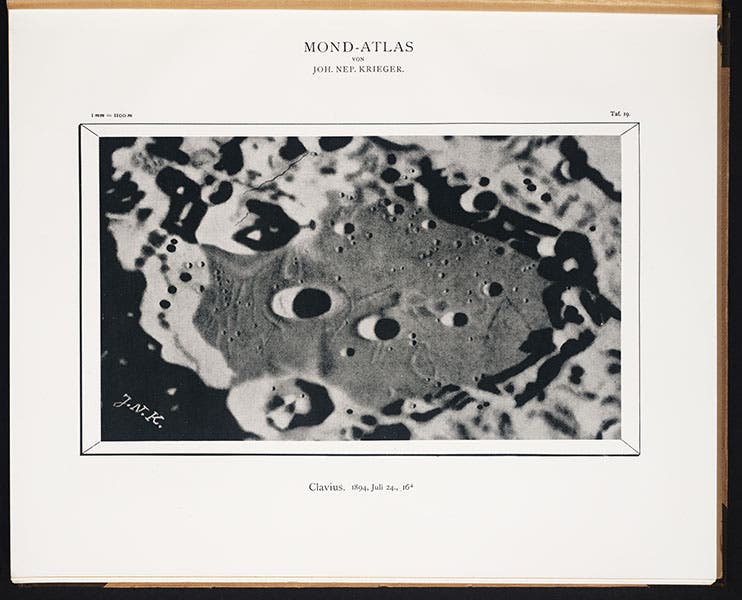Scientist of the Day - Johann Nepomuk Krieger
Johann Nepomuk Krieger, a German astronomer, was born Feb. 4, 1865. Krieger was a life-long student of the Moon, and he wanted, like many such students at the turn of the 20th century, to produce a definitive lunar atlas. The first photographic atlases of the Moon were being published at about this time, and they had their proponents, but many observers argued that they could see features on the Moon that did not show up in photographs, and insisted on hand-drawn maps. Krieger opted for the best of both approaches. He acquired low-contrast photographs of the lunar surface, enlarged them, and then used these as a base for his drawings, which he made in his private observatory in Trieste, and which were remarkably detailed and really quite beautiful.
He published 28 drawings in 1898, as Part I of his Mond-Atlas. Krieger died in 1902, before he could complete the work, but his remaining drawings saw the light of day in 1912, when a colleague published Part II of the Mond-Atlas. We have both parts in our History of Science Collection.
The lunar features we reproduce here from Krieger’s lunar atlas are the craters Clavius (second image) and Maginus (third image) from volume 1, and Copernicus (first image) and the Hyginus rille (fourth image) from volume 2. Each of the plates has a glassine overlay with identified features printed on it; we show Hyginus twice, the second time with the overlay down (fifth image).
The first volume has a photographic frontispiece that shows Krieger's observatory in Trieste, from which he made his lunar observations (sixth image). We included Krieger’s Mond-Atlas in our exhibition of lunar cartography, The Face of the Moon: Galileo to Apollo, where you may see a detail of Krieger’s drawing of the crater Gassendi.
And in case you were wondering, Krieger was named after John of Nepomuk, a 14th-century Bohemian martyr who was tossed from Prague’s Charles Bridge into the River Vitava (Moldau) by the not-so-Good King Wenceslaus in 1393, supposedly because he refused to reveal confessional secrets. Several scientists have been named after John, including Johann Nepomuk Maelzel, who invented (or stole the idea for) the metronome and who purchased the famous chess-playing automaton “the Turk” and brought it to the United States in the 1830s for an extended tour. Maelzel has yet to have his day in court as a Scientist of the Day.
Dr. William B. Ashworth, Jr., Consultant for the History of Science, Linda Hall Library and Associate Professor, Department of History, University of Missouri-Kansas City. Comments or corrections are welcome; please direct to ashworthw@umkc.edu.










